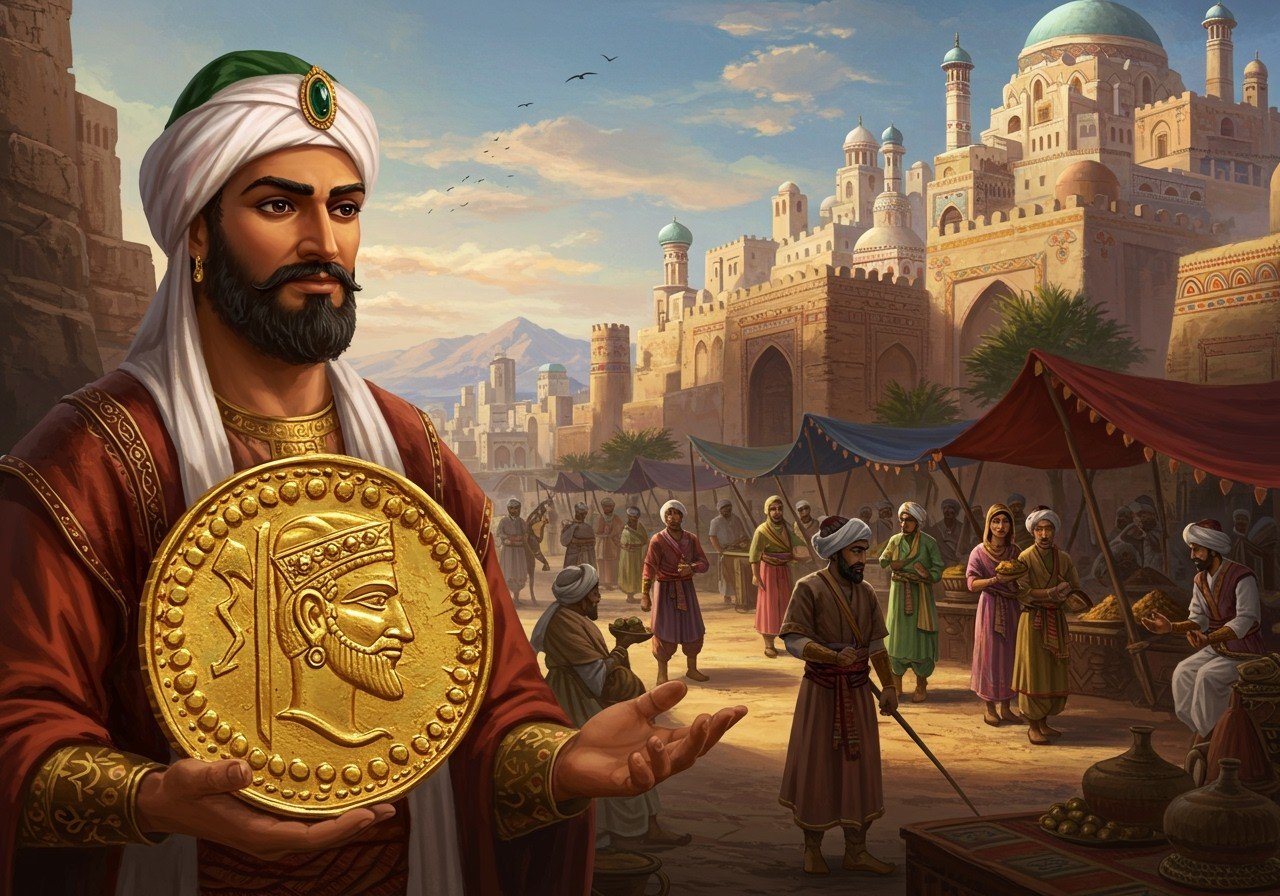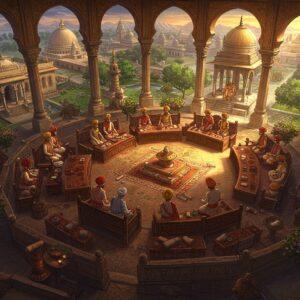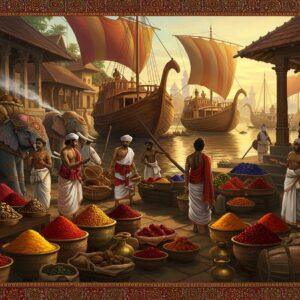
Imagine a time when grand empires rose and fell, not just on battlefields, but along the dusty, winding paths of the legendary Silk Road. This ancient network wasn’t just for trading silk and spices; it was a vibrant stage for a fascinating historical drama. One of the most compelling chapters of this story is the struggle between two giants: the Kushan Empire, with its deep roots in the Indian subcontinent, and the powerful Sasanian Empire of Persia. Their conflict and cultural mingling gave birth to the unique Kushano-Sasanian era, a period that shaped the history of Central Asia forever.

Two Empires, One Destiny: The Stage is Set
In one corner, we have the magnificent Kushan Empire, which flourished from the Yuezhi confederation and spread its influence across what is now Northern India, Pakistan, and Afghanistan. Under rulers like the great Kanishka, it became a true melting pot of cultures, embracing Buddhism, Zoroastrianism, and even Greco-Roman traditions. In the other corner stood the formidable Sasanian Empire, which rose from the ashes of the Parthian Empire. Led by ambitious kings like Ardashir I, their goal was clear: to expand eastward and claim control over the lucrative Silk Road.
This ambition inevitably led them to clash. The Silk Road was the ultimate prize. Controlling it meant controlling the flow of wealth, ideas, and military power across continents. The conflict wasn’t just a series of battles; it was a grand chess game played out over vast territories, with cities like Balkh and Merv as the key squares.
The Great Struggle: Expansion and a New Kingdom
The conflict truly ignited in the 3rd century AD. Ardashir I began pushing the Sasanian borders eastward, capturing crucial territories like Khorasan and Balkh from the declining Kushans. His successor, Shapur II, continued this push around 350 AD, securing vast lands and weakening the Kushan hold significantly.
But history is rarely simple. The newly conquered lands didn’t just merge into the Sasanian empire. Instead, they evolved into a unique entity: the Kushano-Sasanian Kingdom. This kingdom was ruled by a different branch of the Sasanian royal family and developed its own distinct identity, blending Persian and Indian influences. This fascinating period shows us that even in conflict, new cultures can be born.
More Than War: A Confluence of Cultures
It’s a beautiful paradox that while soldiers clashed, cultures connected. The Kushano-Sasanian period was a time of incredible artistic and spiritual exchange. You can see this fusion in their coins, which feature a mix of Sasanian and Kushan symbols, and in the unique sculptures from that era. Buddhist monks and Zoroastrian priests travelled these very routes, sharing their beliefs and enriching the spiritual landscape of Central Asia. It was a time when art, architecture, and faith flowed as freely as the trade caravans.
This spirit of cultural reverence and authenticity is something we deeply value at Poojn.in. To truly connect with our ancient traditions, having the right ritual items is essential. For moments of prayer and meditation, the pure fragrance of sandalwood can create a serene atmosphere. We recommend the Kushal Mangal Sandalwood Agarbatti to bring that sacred tranquility into your home.
Unraveling the Kushano-Sasanian Legacy
Many people wonder about the lasting impact of this era. The Kushano-Sasanian chapter wasn’t just a footnote in history; it set the stage for future empires, including the glorious Gupta Empire in India. While their reign eventually ended due to pressure from new powers and internal strife, their influence endured. They were a bridge between two great civilisations, Persia and India, and their legacy is woven into the art, culture, and history of the region.
We are also often asked about their religious practices. The Kushano-Sasanian rulers primarily followed Zoroastrianism, their Sasanian heritage. However, they were known for their tolerance and ruled over lands where Buddhism and Hinduism were widely practised. This respect for diverse faiths is a timeless lesson from their reign. Exploring such historical details helps us understand the complex and beautiful tapestry of ancient India, a journey similar to exploring the wonders of the Sas-Bahu Temples.
Connect with Tradition in Your Own Home
Reading about these ancient traditions can inspire us to connect more deeply with our own spiritual practices. A sacred space for meditation or puja is essential in an Indian home. For centuries, our sages have used seats made of natural, pure materials to maintain the sanctity of their rituals.
Poojn.in brings you the authentic Kushasan, a meditation mat meticulously crafted from original Kush grass following Vedic processes. Using a Kushasan is believed to help insulate the body from earth’s energies, allowing the practitioner to focus fully.
-
Product: Kushasan (कुश आसन)
Bring home this timeless piece of our heritage to enhance your spiritual journey. It is available in various sizes to suit your needs, delivered right to your doorstep. -
Artistic Heritage: Stylish Peacock Tray
Just as the Kushano-Sasanians left behind beautiful art, you can adorn your home with decor that reflects our rich cultural heritage. This peacock tray is perfect for your pooja room or as a decorative piece, celebrating Indian craftsmanship.
A Timeless Echo
The story of the Kushano-Sasanians is a powerful reminder that history is shaped by both conflict and connection. Their clashes on the Silk Road were not just for power, but were part of a larger exchange that enriched cultures and created a legacy that still echoes today. As we learn about their world, we gain a deeper appreciation for the intricate and interwoven history that has shaped our own lives and traditions.


